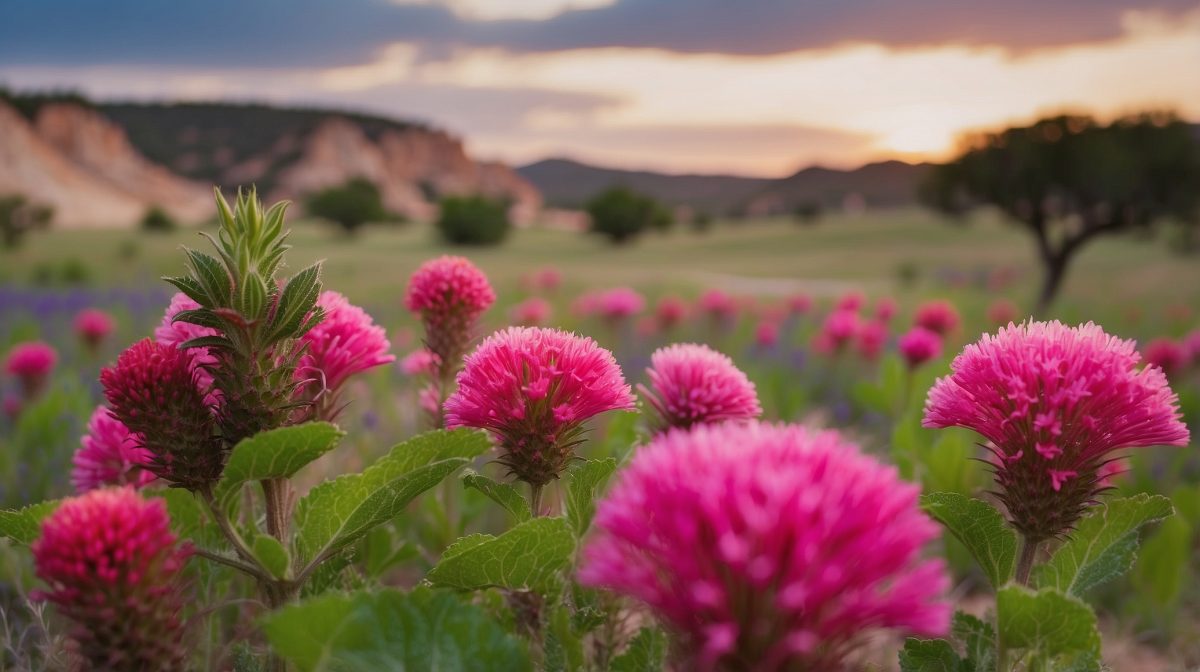Around these parts, the climate and soil are as unique as a bluebonnet in spring. Knowin’ what to plant and when ain’t just about havin’ a green thumb; it’s about respectin’ the land and workin’ with it. So, let’s talk about how the Texas Hill Country can be your best ally in the garden, and make sure you’re settin’ those roots down at the right time.
Understanding Texas Hill Country Seasons
Diggin’ into the Texas Hill Country seasons means gettin’ a handle on our weather patterns. Y’all might be thinkin’ it’s all heat and sunshine, but we get a fair share of chill and rain too. From the scorchin’ summers to the occasional icy kiss in winter, knowin’ these patterns is key to plantin’ a successful garden.
And let’s not forget about dancin’ with Mother Nature. Syncin’ up your plantin’ schedule with her rhythms ensures that your garden doesn’t just survive, it thrives. It’s all about timin’, y’all. Plant too early or too late, and you might as well be spittin’ in the wind. But get it just right, and you’ll be grinnin’ like a possum eatin’ a sweet potato.
Spring Planting
Once the frost has said its goodbyes and the soil’s as warm as a sunbathed armadillo, it’s time to start plantin’ in spring. We’re talkin’ about a whole mess of vegetables and flowers that are just itchin’ to grow. Tomatoes, peppers, and squash are eager to jump into that warm soil, and don’t forget those wildflowers – they’ll make your heart sing.
Now, before you go tossin’ seeds around, let’s chat about soil prep. You’ll want to give your plants the best start possible by enrichin’ that earth with compost and makin’ sure it’s loose and drainin’ well. And keep an eye on the sky – a late-season frost can swoop in quicker than a hawk on a field mouse, so be prepared to cover those tender seedlings if needed.
Summer Planting
Summer in the Texas Hill Country ain’t for the faint of heart, and the same goes for your plants. You’ll want to stick to heat-tolerant varietals that can handle the Texas sun without wiltin’ like a cowboy without his hat. Think okra, black-eyed peas, and even some hardy herbs that’ll keep your kitchen spiced up all season.
Now, don’t forget about plantin’ for the future. Mid-summer is prime time to start thinkin’ about your fall harvest. Get those pumpkins and sweet potatoes in the ground, and you’ll be set for a harvest hoedown come autumn. Just make sure to keep ’em watered, ’cause summer in these parts can be drier than a humorless sermon.
Fall Planting
When the summer heat starts to ease off like a tired dog on a porch, it’s time to transition your garden. Fall is perfect for greens like kale and spinach, and it’s high time to get those root vegetables like carrots and beets nestled into the soil. They’ll thank you by turnin’ into the tastiest dishes come winter.
And speakin’ of winter, fall’s when you’ll want to start gettin’ ready for the colder months. Plantin’ perennials and cover crops like clover and rye can help enrich your soil, makin’ sure it’s ready for the next growin’ season. Think of it as tuckin’ your garden into bed with a warm blanket of nutrients.
Winter Strategies
Even when the chill sets in, there’s work to be done in a Texas Hill Country garden. We’re talkin’ about cool-season crops like broccoli and lettuce that don’t mind a little nip in the air. And with Texas winters bein’ milder than a well-mannered debutante, you can often keep your garden goin’ with the right care.
Protectin’ your plants from the cold is key, so consider mulchin’ and maybe even a cold frame or two if you’re feelin’ fancy. And don’t forget to take advantage of our mild winters to prepare for the spring. It’s a fine time to test your soil and make any adjustments, so you’re ready to hit the ground plantin’ when the time comes.
Year-Round Planting
Now, for those of y’all with a hankerin’ to garden year-round, there are plants that’ll thrive all year long in the Texas Hill Country. Herbs like rosemary and thyme don’t need much fussin’ over, and there are plenty of native shrubs and flowers that’ll keep your garden lookin’ purtier than a painted sunset, no matter the season.
But remember, continuous garden care and maintenance are as important as your mama’s Sunday dinner. Keepin’ an eye on your plants, tendin’ to their needs, and adjustin’ your strategies with the seasons will ensure your garden is as robust as a longhorn and as vibrant as our Texas blue skies.
Conclusion
Well, we’ve covered the gamut of what to plant and when here in the Texas Hill Country. From the warm embrace of spring to the crisp whisper of winter, your garden can be a testament to the beauty and bounty of our land. Just remember to work with the seasons, not against ’em, and you’ll be rewarded with a harvest as rich as our Texas heritage.
So, take what you’ve learned, embrace the rhythms of Texas Hill Country life, and let your garden be a reflection of the love and care you put into it. Happy plantin’, y’all, and may your garden be as full of life as a country dance floor on a Saturday night.
FAQs
What’s the biggest mistake folks make when plantin’ in Texas Hill Country?
The biggest blunder is ignorin’ the seasons and plantin’ at the wrong time. You’ve got to be mindful of when to put those seeds in the ground to ensure they sprout and grow strong.
Can I plant fruit trees in our Hill Country soil, and if so, which ones do best?
Sho’ nuff, you can plant fruit trees here. Peach, plum, and fig trees do particularly well in our soil, blessin’ you with some sweet pickin’s when the time is right.
How do I deal with the pesky critters that like to munch on my garden?
Keepin’ critters at bay requires a bit of savvy. Fences, netting, and even some companion plantin’ can help protect your precious greens from becoming a critter’s dinner.
What are some native Texas Hill Country plants that I should consider for drought resistance?
For drought resistance, look to natives like Texas sage, lantana, and yucca. They’re tough as nails and can weather the dry spells without much fuss.
When’s the best time to start a wildflower garden in the Hill Country?
The best time to sow those wildflower seeds is in the fall, so they can establish themselves over the winter and burst into a riot of color come spring.


